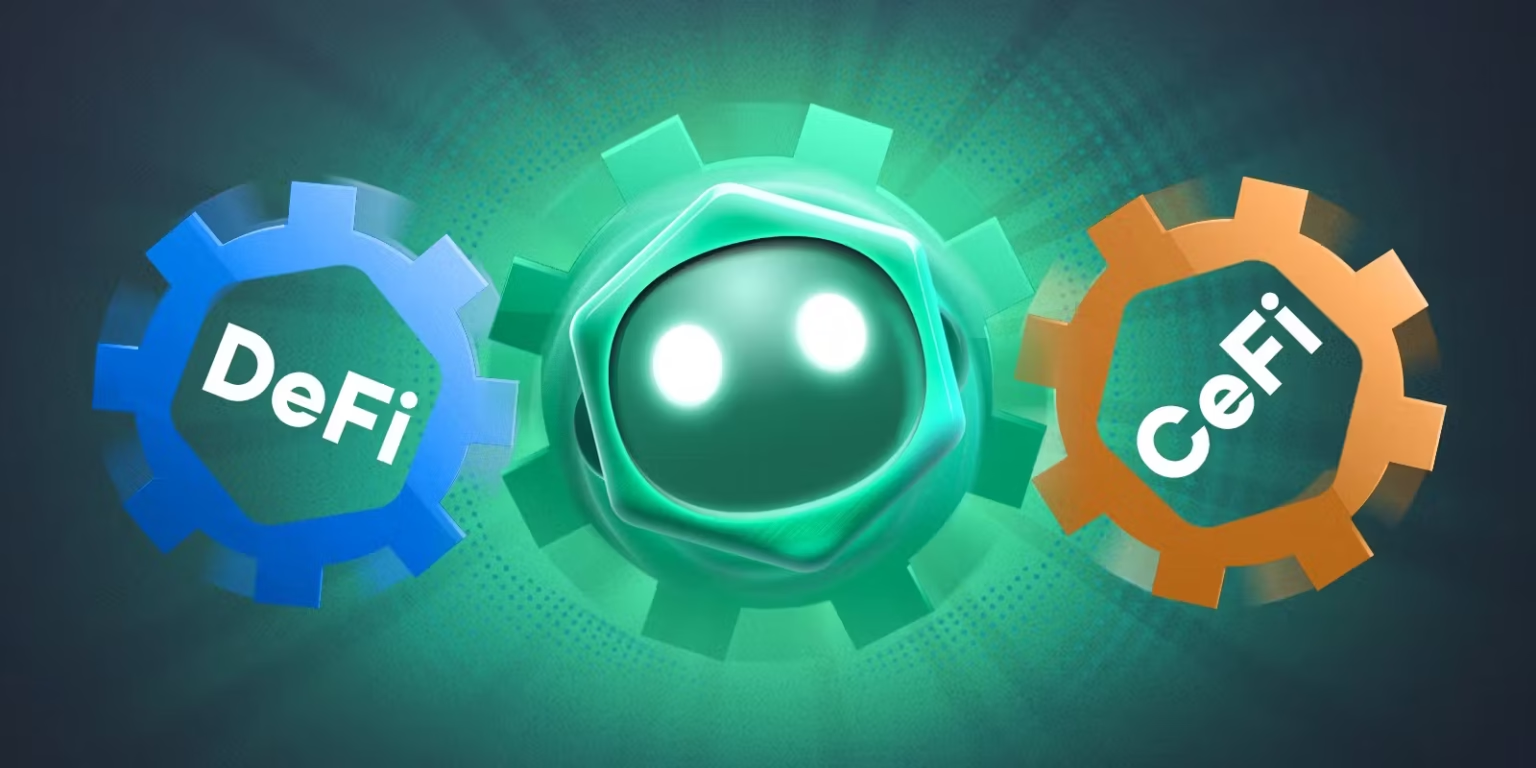Which is better, DeFi or CeFi? This question sits at the center of today’s financial transformation, as investors, developers, and regulators debate the merits of decentralized finance (DeFi) and centralized finance (CeFi). Both models promise global access to digital assets, but they diverge in governance, risk management, and innovation. This article investigates the strengths, weaknesses, and future potential of each, helping readers make an informed choice in an evolving crypto economy.
Understanding the Core Models
What Is DeFi?
Decentralized finance (DeFi) refers to blockchain-based platforms that eliminate intermediaries such as banks or brokers. Built mainly on networks like Ethereum and Solana, DeFi protocols use smart contracts to enable lending, borrowing, trading, and yield farming without centralized oversight. According to CoinDesk, DeFi’s open-source nature fosters transparency and censorship resistance.
What Is CeFi?
Centralized finance (CeFi) involves crypto services provided by companies that control user funds and operations, such as major exchanges or lending platforms. CeFi institutions manage custody, customer support, and regulatory compliance, offering a user experience similar to traditional banking. A detailed overview from Investopedia highlights CeFi’s emphasis on convenience and consumer protection.
DeFi Strengths and Challenges
Key Advantages
- Transparency: Every transaction is recorded on public blockchains, allowing open auditing.
- Global Access: Anyone with an internet connection can participate, regardless of geography.
- Innovation Pace: Rapid protocol upgrades and new tokenomics drive experimentation.
Major Risks
- Smart Contract Vulnerabilities: Bugs or exploits can result in millions lost overnight.
- Regulatory Uncertainty: Governments worldwide debate how to oversee decentralized systems.
- User Responsibility: Self-custody means users are fully accountable for lost keys or mistakes.
CeFi Strengths and Challenges
Key Advantages
- User-Friendly Interface: Familiar onboarding processes attract mainstream investors.
- Customer Support & Insurance: Centralized operators may offer reimbursements for hacks or fraud.
- Regulatory Compliance: Licensing can build institutional trust and access to fiat onramps.
Major Risks
- Custodial Risk: Users rely on companies to safeguard assets; failures like the FTX collapse exposed vulnerabilities.
- Reduced Privacy: Identity verification (KYC) and reporting obligations limit anonymity.
- Potential for Mismanagement: Centralized control can lead to poor risk practices or opaque decisions.
Which Is Better, DeFi or CeFi? A Comparative Lens
| Feature | DeFi | CeFi |
|---|---|---|
| Custody | Self-custody via private keys | Custodial accounts managed by firms |
| Transparency | Fully on-chain | Internal ledgers, partial transparency |
| Accessibility | Global, permissionless | Often restricted by jurisdiction |
| Regulation | Evolving, uncertain | Established frameworks emerging |
| Innovation Speed | Rapid | Slower due to compliance |
| Risk Profile | Smart contract and market risks | Management and counterparty risks |
This comparison shows that neither system is inherently “better”; it depends on an investor’s priorities—control versus convenience, privacy versus compliance, innovation versus stability.
Hybrid Models: The Emerging Middle Ground
Several platforms now blend DeFi transparency with CeFi safeguards. For example, regulated DeFi protocols and decentralized exchanges offering optional KYC aim to satisfy regulators while preserving decentralization. Analysts at Chainalysis note rising adoption of hybrid models, suggesting the next wave of crypto services will merge these paradigms.
Strategic Considerations for Investors
Risk Management
Investors should diversify across both ecosystems, maintaining strict security practices. Cold wallets and multi-sig protections are vital when using DeFi, while selecting reputable CeFi platforms with robust audits reduces custodial risk.
Regulatory Outlook
Ongoing legislation in the U.S., EU, and Asia will shape how DeFi evolves and how CeFi maintains compliance. Policy shifts—such as stablecoin regulations—could tip the balance toward one model in specific markets.
Long-Term Vision
DeFi champions argue for a trustless financial world where code is law. CeFi proponents emphasize that mainstream adoption requires clear governance and consumer protections. The ultimate winner may be a synthesis: decentralized infrastructure with regulated gateways.
FAQ: Which Is Better, DeFi or CeFi?
Which is better, DeFi or CeFi for beginners?
CeFi often suits beginners due to its intuitive interfaces, customer support, and lower technical barriers, while DeFi requires managing private keys and understanding blockchain mechanics.
Which is better, DeFi or CeFi for long-term investment?
Long-term investors might favor a mix: CeFi for regulatory clarity and DeFi for higher yields and innovation exposure. Diversification reduces risk across both models.
Which is better, DeFi or CeFi in terms of security?
Security depends on context. DeFi eliminates centralized custodial risk but faces smart contract exploits. CeFi platforms provide insurance and audits but remain vulnerable to insider mismanagement.
Which is better, DeFi or CeFi for privacy?
DeFi offers greater privacy through pseudonymous wallets, while CeFi platforms enforce strict KYC and data reporting requirements.
Conclusion: The Road Ahead
Which is better, DeFi or CeFi? The answer lies in individual priorities and risk tolerance. DeFi delivers transparency, innovation, and autonomy, while CeFi offers convenience, consumer protection, and regulatory pathways. Over the next decade, expect a convergence of the two—hybrid platforms that balance decentralization with compliance. For investors and developers, staying informed and adaptable will be key as the financial frontier continues to shift.

